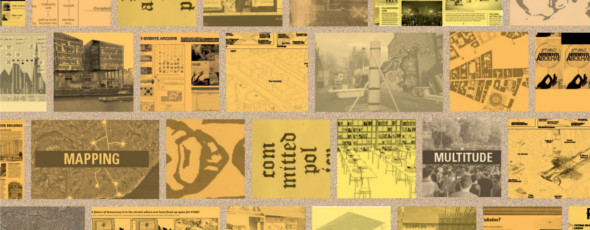
Vocalising a dissenting viewpoint in the face of untenable situations is at the core of protesting. Throughout the past few years, there is a sense that such public disgust of local issues has networked into a global pandemic. We have seen mass protests in the streets of Europe, the Middle East, Asia, and the Americas; all ignited by various social ills and all, in some epistemic way, threaded by a faithful strength of line to one another. Planning for Protest came about as a conversation over what was happening in these flashpoints throughout the world, with a special focus on how the very spaces in which they took place helped to shape or form, if not circumvent, the success or failure of each cities’ public mobilisation. Inasmuch as the mass convention of peoples creates the voice of these protests, we wanted to see how the streets and squares, its buildings, form the backdrop of these protests’ stages.
We asked 12 architects/architecture offices embedded within each of the 12 cities to think clearly of what they saw in their streets as these protests rose and grew. From this, 12 different typologies of where, why, and how we protest formed. Their contributions show each protest as a unique moment that transpires when collective spirit fills the time-worn arteries of urban planning. While seemingly beginning from a point of limitation, the contributors offer their own proposals on what we can best make of what we already have. Utilising both old and new means, from changing the orientations of streets or using the internet as a vehicle for real-time intervention, their ideas exist as stratagems for future modes of protests. It would be wrong to think these will be the last; and, in their differences, they share a fealty to an ideal. Their proposals show protests as an ongoing dialogue that not only endure but must go on, in the hopes of this era’s Great Conversation being “indeed endless, not in the sense of endlessly repetitive, but in the sense of endlessly creative in exactly the way that Chomsky characterises language itself – that is, as making infinite use of finite means.”
It has been remarked that 1968 was the golden age of protests. Like then, the protests of today share common reasons for people to be disgusted enough to move: capitalist systems, bureaucratic elitism, negation of individual rights, and an endless war, amongst other sublevels of injustices. The era was borne on the cross-generational drift between the recovery time from the ‘just and good’ World War 2 and Vietnam, the first war to receive nightly coverage on television. It would not be wrong to view 1968 as the moment when Leftism found a functional identity to the middle-class. Not that it was easily understood, or taken well by all. In an era defined by Cold War posturing in which either side was presented as both good and evil simultaneously, the only thing mutually assured in 1968 was competing moralities. It is no surprise that people took to the streets en masse.
The idealist as the earnest protestor would undoubtedly hope for two things to be achieved: firstly, that their voice can be heard by the entity causing the malaise; secondly, and most importantly, that their voice leads to a rapid and effective change working towards the correction of a particularly odious injustice a helpless society is made to bear. If we take a look at the track of history, there is little to think that the idealist will in anyway see fair returns on his investment. In that sense, why we protest is most reflective of a basic and uniquely human trait: desire. What we want innately is most likely what we will most fervently pursue. Though we desire some level of change to what we perceive as openly unfair, most of the human population throughout this world are localised within the areas of cities with their own concepts of governance. It is as proscribed in the political writings of Thomas Hobbes in the 17th Century: the only thing guaranteed to the agent moving from the State of Nature to that of Civilization is the unmitigated right to sue each other at will. Hobbes, when looking at various instances of national celebration and public protest at the gates of Buckingham Palace (a square he learned to despise over his lifetime because of its costly upkeep), knew what was implicit: seats of power will morph into the vacation homes of ruling-class banks.
Planning for Protest is, at face value, a project documenting architecture’s role in how protests come to shape themselves. This is certainly the case. As protests become media events in their own right, we wanted our project to shed light on what is so obvious that it is much too easily—and often is—overlooked: the actual urban spaces in which these protests take place. The contributors to this project have each granted us remarkable insights to the psychological and the physical ‘traits’ of their own cities they work in, filling in the gaps for us of that overlooked space. There is a remarkable connection that each contributor has to their city that is apparent when encountering their proposals. We were confident in seeing a level of erudition from all our contributors, but we were pleasantly taken aback by the well-source of humanism imbued in all their findings. It is a humanism that springs from a sense of place, and speaks to our contributors’ ongoing connection, and ever-growing attachment, to it. We have been deeply fortunate and thankful to have had the chance to collaborate on this project with them.
www.planningforprotest.org | Ben Allen | James Bae | Ricardo Gomes | Shannon Harvey | Adam Michaels









